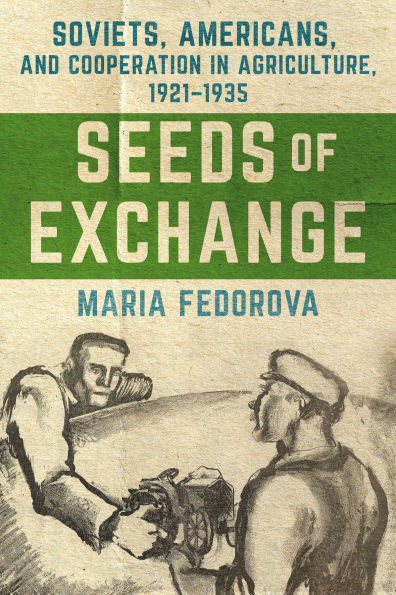Seeds of Exchange examines the US and Soviet exchange of agricultural knowledge and technology during the interwar period. Maria Fedorova challenges the perception of the Soviet Union as a passive recipient of American technology and expertise. She reveals the circular nature of this exchange through official government bureaus, amid anxious farmers in crowded auditoriums, in cramped cars across North Dakota and Montana, and by train over the once fertile steppes of the Volga.
Amid the post–World War I food insecurity, Soviet and American agricultural experts relied on transnational networks, bridging ideological differences. As Soviets traveled across the US agricultural regions and Americans plowed steppes in the southern Urals and the lower Volga, both groups believed that innovative solutions could be found beyond their own national borders. Soviets were avidly interested in American technology and American agricultural experts perceived the Soviet Union to be an ideal setting for experimenting with and refining modern farm systems and organizational practices. As Seeds of Exchange shows, agricultural modernization was not the exclusive domain of Western countries.
Seeds of Exchange examines the US and Soviet exchange of agricultural knowledge and technology during the interwar period. Maria Fedorova challenges the perception of the Soviet Union as a passive recipient of American technology and expertise. She reveals the circular nature of this exchange through official government bureaus, amid anxious farmers in crowded auditoriums, in cramped cars across North Dakota and Montana, and by train over the once fertile steppes of the Volga.
Amid the post–World War I food insecurity, Soviet and American agricultural experts relied on transnational networks, bridging ideological differences. As Soviets traveled across the US agricultural regions and Americans plowed steppes in the southern Urals and the lower Volga, both groups believed that innovative solutions could be found beyond their own national borders. Soviets were avidly interested in American technology and American agricultural experts perceived the Soviet Union to be an ideal setting for experimenting with and refining modern farm systems and organizational practices. As Seeds of Exchange shows, agricultural modernization was not the exclusive domain of Western countries.

Seeds of Exchange: Soviets, Americans, and Cooperation in Agriculture, 1921-1935
234
Seeds of Exchange: Soviets, Americans, and Cooperation in Agriculture, 1921-1935
234Related collections and offers

Product Details
| ISBN-13: | 9781501782800 |
|---|---|
| Publisher: | Northern Illinois University Press |
| Publication date: | 08/15/2025 |
| Series: | NIU Series in Slavic, East European, and Eurasian Studies |
| Sold by: | Barnes & Noble |
| Format: | eBook |
| Pages: | 234 |
| File size: | 7 MB |
| Age Range: | 18 Years |
